
 This article discusses the changing representation of suicide in selected Japanese literary and visual texts, focusing on four 20th and 21st century novels (Kokoro by Natsume Soseki [1914], The Silent Cry/Man’en Gannen no Futtoboru by Kenzaburo Oe [1967], Norwegian Wood/Noruwei no Mori by Haruki Murakami [1987], and Gray Men/Gurei Men by Tomotake Ishikawa [2012]), and concluding with a brief mention of Sion Sono’s film Suicide Circle (Jisatsu Sakuru, 2002) and the manga it inspired (Jisatsu Circle, Furuya Ukamaru, 2002). The article argues that the discussed texts have departed from the historic/nationalistic notion of suicide as noble death in favour of a more Gothic positioning of the theme. In Gothic, suicide has been conventionalised as a declaration of guilt, a side-effect of madness, an extreme form of self-harm, the ultimate withdrawal from life, and a reason for a ghostly return. In Japanese texts, suicide is at the same time civilised and barbaric, elegant and chaotic. It is a perfectly composed act of ascetic renunciation and achievement of a Buddhist ideal, as well as an unstoppable viral outbreak that threatens all life. It is an act of submission to societal norms, a cry of rebellion, and a call to revolution; a choice of an individual, but also the play of karmic forces bound to be repeated. While proposing a familiar Gothic positioning of suicide in the context of depression, alienation, inertia, defiance against authority, dysfunctional relationships, death instinct, or masochistic submission, the discussed texts, a testament to the convergence of Western and Eastern philosophies in modern Japan, invite us to revisit these Gothic conventions from a transcultural perspective.
This article discusses the changing representation of suicide in selected Japanese literary and visual texts, focusing on four 20th and 21st century novels (Kokoro by Natsume Soseki [1914], The Silent Cry/Man’en Gannen no Futtoboru by Kenzaburo Oe [1967], Norwegian Wood/Noruwei no Mori by Haruki Murakami [1987], and Gray Men/Gurei Men by Tomotake Ishikawa [2012]), and concluding with a brief mention of Sion Sono’s film Suicide Circle (Jisatsu Sakuru, 2002) and the manga it inspired (Jisatsu Circle, Furuya Ukamaru, 2002). The article argues that the discussed texts have departed from the historic/nationalistic notion of suicide as noble death in favour of a more Gothic positioning of the theme. In Gothic, suicide has been conventionalised as a declaration of guilt, a side-effect of madness, an extreme form of self-harm, the ultimate withdrawal from life, and a reason for a ghostly return. In Japanese texts, suicide is at the same time civilised and barbaric, elegant and chaotic. It is a perfectly composed act of ascetic renunciation and achievement of a Buddhist ideal, as well as an unstoppable viral outbreak that threatens all life. It is an act of submission to societal norms, a cry of rebellion, and a call to revolution; a choice of an individual, but also the play of karmic forces bound to be repeated. While proposing a familiar Gothic positioning of suicide in the context of depression, alienation, inertia, defiance against authority, dysfunctional relationships, death instinct, or masochistic submission, the discussed texts, a testament to the convergence of Western and Eastern philosophies in modern Japan, invite us to revisit these Gothic conventions from a transcultural perspective.
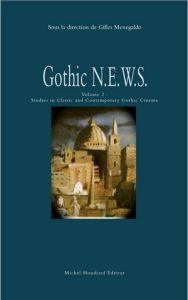 Contemporary Asian horror films seem to be particularly fond of resorting to various techniques of visual recording. This paper focuses in more detail on two such relatively recent films: a Hong Kong production Abnormal Beauty (2004), directed/produced by Oxide and Danny Pang and a Thai film Shutter (2004), directed by Banjong Pisanthanakun and Parkpoom Wongpoom, both of which feature professional photographers as main protagonists and resort consequently to the notion of photography as a key concept for the narrative structure and the films’ visual organisation. The paper will examine the ways the two films exploit photography’s specific relation to death and the afterlife, raising the question whether the theoretical discourse of photography can potentially “westernise” the narrative technique of an Asian film.
Contemporary Asian horror films seem to be particularly fond of resorting to various techniques of visual recording. This paper focuses in more detail on two such relatively recent films: a Hong Kong production Abnormal Beauty (2004), directed/produced by Oxide and Danny Pang and a Thai film Shutter (2004), directed by Banjong Pisanthanakun and Parkpoom Wongpoom, both of which feature professional photographers as main protagonists and resort consequently to the notion of photography as a key concept for the narrative structure and the films’ visual organisation. The paper will examine the ways the two films exploit photography’s specific relation to death and the afterlife, raising the question whether the theoretical discourse of photography can potentially “westernise” the narrative technique of an Asian film.
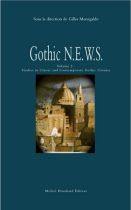
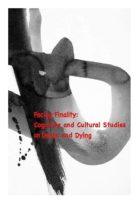
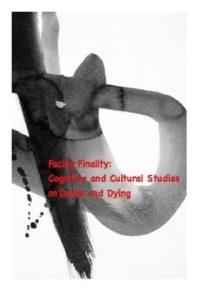 This article focuses on the popular representation of the afterlife, or our belief in such, as embodied in the idea of a ghost, a revenant, or a spectre, or in other words, the spirit of the deceased, as contrasted with the more animistic spiritual beings epitomising the powers of the natural world. For the lack of suitable research materials, the paper is geographically limited to the areas influenced by the major religious systems of beliefs, out of which Christianity (particularly Catholicism), Buddhism and Taoism seem to be particularly spirit-friendly, and to the areas culturally abounding in literary and cinematic representations of the spiritual encounters between the living and the dead. At the time when inter-cultural communication has become a hot topic to discuss, we become aware that even the dead are expected to resolve their cultural differences. One way to bring harmony to the culturally diverse world of contemporary spirits, as this paper suggests, is to see them as subject to the same process of globalisation and informatization as the living.
This article focuses on the popular representation of the afterlife, or our belief in such, as embodied in the idea of a ghost, a revenant, or a spectre, or in other words, the spirit of the deceased, as contrasted with the more animistic spiritual beings epitomising the powers of the natural world. For the lack of suitable research materials, the paper is geographically limited to the areas influenced by the major religious systems of beliefs, out of which Christianity (particularly Catholicism), Buddhism and Taoism seem to be particularly spirit-friendly, and to the areas culturally abounding in literary and cinematic representations of the spiritual encounters between the living and the dead. At the time when inter-cultural communication has become a hot topic to discuss, we become aware that even the dead are expected to resolve their cultural differences. One way to bring harmony to the culturally diverse world of contemporary spirits, as this paper suggests, is to see them as subject to the same process of globalisation and informatization as the living.
 This article discusses the changing representation of suicide in selected Japanese literary and visual texts, focusing on four 20th and 21st century novels (Kokoro by Natsume Soseki [1914], The Silent Cry/Man’en Gannen no Futtoboru by Kenzaburo Oe [1967], Norwegian Wood/Noruwei no Mori by Haruki Murakami [1987], and Gray Men/Gurei Men by Tomotake Ishikawa [2012]), and concluding with a brief mention of Sion Sono’s film Suicide Circle (Jisatsu Sakuru, 2002) and the manga it inspired (Jisatsu Circle, Furuya Ukamaru, 2002). The article argues that the discussed texts have departed from the historic/nationalistic notion of suicide as noble death in favour of a more Gothic positioning of the theme. In Gothic, suicide has been conventionalised as a declaration of guilt, a side-effect of madness, an extreme form of self-harm, the ultimate withdrawal from life, and a reason for a ghostly return. In Japanese texts, suicide is at the same time civilised and barbaric, elegant and chaotic. It is a perfectly composed act of ascetic renunciation and achievement of a Buddhist ideal, as well as an unstoppable viral outbreak that threatens all life. It is an act of submission to societal norms, a cry of rebellion, and a call to revolution; a choice of an individual, but also the play of karmic forces bound to be repeated. While proposing a familiar Gothic positioning of suicide in the context of depression, alienation, inertia, defiance against authority, dysfunctional relationships, death instinct, or masochistic submission, the discussed texts, a testament to the convergence of Western and Eastern philosophies in modern Japan, invite us to revisit these Gothic conventions from a transcultural perspective.
This article discusses the changing representation of suicide in selected Japanese literary and visual texts, focusing on four 20th and 21st century novels (Kokoro by Natsume Soseki [1914], The Silent Cry/Man’en Gannen no Futtoboru by Kenzaburo Oe [1967], Norwegian Wood/Noruwei no Mori by Haruki Murakami [1987], and Gray Men/Gurei Men by Tomotake Ishikawa [2012]), and concluding with a brief mention of Sion Sono’s film Suicide Circle (Jisatsu Sakuru, 2002) and the manga it inspired (Jisatsu Circle, Furuya Ukamaru, 2002). The article argues that the discussed texts have departed from the historic/nationalistic notion of suicide as noble death in favour of a more Gothic positioning of the theme. In Gothic, suicide has been conventionalised as a declaration of guilt, a side-effect of madness, an extreme form of self-harm, the ultimate withdrawal from life, and a reason for a ghostly return. In Japanese texts, suicide is at the same time civilised and barbaric, elegant and chaotic. It is a perfectly composed act of ascetic renunciation and achievement of a Buddhist ideal, as well as an unstoppable viral outbreak that threatens all life. It is an act of submission to societal norms, a cry of rebellion, and a call to revolution; a choice of an individual, but also the play of karmic forces bound to be repeated. While proposing a familiar Gothic positioning of suicide in the context of depression, alienation, inertia, defiance against authority, dysfunctional relationships, death instinct, or masochistic submission, the discussed texts, a testament to the convergence of Western and Eastern philosophies in modern Japan, invite us to revisit these Gothic conventions from a transcultural perspective.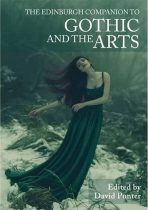
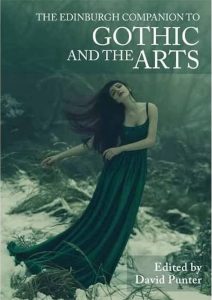 Installation art is always simultaneously material and ephemeral, comprised of tangible objects but also of light, sound, or air. Its existence is always temporary; it is overshadowed by its own death, ready to be dismantled and moved to the afterlife of a photographic or video record. In this sense, it exists predominantly as its own memory. This semi-spectral nature of installation art, seen as a temporary assemblage of parts always on a verge of collapse and disintegration, makes it particularly open to Gothic influences realised trough a choice of themes or conceptualisation of time and space. Although Gothic has never been specifically defined in the context of art, the visual nature of the Gothic aesthetics makes the two compatible. This chapter highlights the work of several twentieth and twenty-first century artists to examine different ways installation art engages with the Gothic. The discussion focuses on the formal qualities of Gothic installations, particularly the construction of Gothic objects and bodies through the use of forms and media that can be seen as impure or abject, and the way these installations evoke the fragmented, oppressive, and disassociated spaces of Gothic and embrace the temporality directed towards memory, history, impermanence, death, and haunting.
Installation art is always simultaneously material and ephemeral, comprised of tangible objects but also of light, sound, or air. Its existence is always temporary; it is overshadowed by its own death, ready to be dismantled and moved to the afterlife of a photographic or video record. In this sense, it exists predominantly as its own memory. This semi-spectral nature of installation art, seen as a temporary assemblage of parts always on a verge of collapse and disintegration, makes it particularly open to Gothic influences realised trough a choice of themes or conceptualisation of time and space. Although Gothic has never been specifically defined in the context of art, the visual nature of the Gothic aesthetics makes the two compatible. This chapter highlights the work of several twentieth and twenty-first century artists to examine different ways installation art engages with the Gothic. The discussion focuses on the formal qualities of Gothic installations, particularly the construction of Gothic objects and bodies through the use of forms and media that can be seen as impure or abject, and the way these installations evoke the fragmented, oppressive, and disassociated spaces of Gothic and embrace the temporality directed towards memory, history, impermanence, death, and haunting.